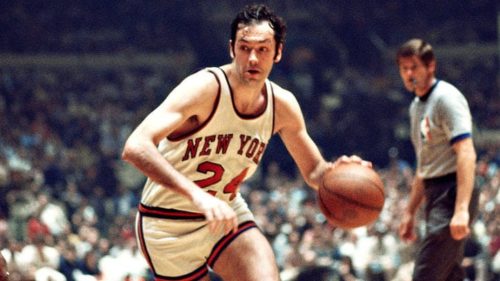Just about everyone I know is charting a new course today. Very little business as usual. Some envision complete overhauls. Others are tweaking messaging and delivery to meet their clients where they are after all the changes to daily routines stemming from the coronavirus. Some cannot see a way forward and are liquidating their businesses. My hope is that every business owner is making the best decision possible based on a full field of vision – what has come before, what is happening now, and what is known about the future.
Unusual Gifts
I have been a basketball junkie for as long as I can remember. The Boston Celtics have always been my pro team, but I used to love learning all about other NBA stars, even the Celtics’ greatest rivals. Some of the things I learned may have been overhyped but were so unusual that I never forgot them. The 1973 World Champion New York Knicks had two players with extraordinary gifts – a bitter pill to swallow for a Celtics fan. Jerry Lucas had a photographic memory that enabled him to memorize 50 pages of the phone book at a time. Bill “Dollar Bill” Bradley had an extraordinary field of vision.
I have never known anyone who could memorize a phone book, but the vision gift struck a chord with me. I always thought the Celtics’ Hall of Fame point guard Bob Cousy had the most expansive field of vision of any NBA great. Cousy legend had it that his eyelids never fully closed, and that he could see a sunset looking east. Overhyped? Probably. It just felt kind of personal when I learned that Bradley might have the edge.
Bill Bradley’s Vision Practice
In John McPhee’s book on Bradley entitled A Sense of Where You Are, he recounts taking Bradley to a Princeton-trained ophthalmologist named Henry Abrams to have his vision tested. “With both eyes open and looking straight ahead, Bradley sees a hundred and ninety-five degrees on the horizontal and about seventy degrees straight down, or about fifteen and five degrees more, respectively, than what is considered perfection.” Upward, Bradley had a range of seventy degrees versus the typical person’s forty-seven degrees. McPhee points out that is why Bradley could stare at the floor while waiting for lobbed passes to arrive – just a little bit of an edge on the defender.
According to McPhee, Dr. Abrams had doubts that peripheral vision could be expanded by consistent exercise. He was intrigued by Bradley’s early childhood efforts to do so. Bradley would stare straight ahead while he walked down the street, attempting to identify objects in storefront windows. Not enough to determine cause-effect, but Bradley’s discipline at least speaks to his intention of trying to see as much as possible.
Seeing the Unseeable
Even with a horizontal range of 195 degrees, Bradley could still never see behind his head. At least not in the conventional sense. Bradley was still determined to know what was going on behind him on the court. As McPhee puts it, “he learned to function in the manner of a blind man as well. When, say, four players are amassed in the middle of things behind Bradley, and it is inconvenient for him to look around, his hands each back and his fingers move rapidly from shirt to shirt or hip to hip. He can read the defense as if he were reading braille.”
Superior vision creates opportunities to move quickly, to move to the best possible spot for success, and to align resources to win. Bradley’s own coaches called him average physically, yet he was a three-time All-American at Princeton, Olympic gold medalist, NBA champion, and All-Star. I am still just a little bitter about the NBA championship in ‘73. Bradley’s competitive spirit had a lot to do with his success, but his acute awareness of what was going on around him played a big factor.
I often wonder how small business owners develop acute vision like Bradley’s, especially now when everything in our economy is in flux. Here are a few ideas to get a complete view.
See everything you can
Bill Bradley trained himself to have awareness of everything in his full field of vision, simultaneously, while staring straight ahead. Most of us get the staring straight ahead part because we never want to lose sight of our clients. But can we maintain that focus while still understanding important vistas like financial markets, government regulations, suppliers, and other competitors? For many, it is a frantic swivelhead approach with little time for reflection or connection all the dots.
Ask people with a different lens
Bradley was never able to see directly behind him. He learned to sense movement and positioning by touch, but I also know how important his teammates were in completing his view of the court. Any team sport relies on constant communication among teammates to be successful. Take time to ask team members and people outside your company, maybe even outside your industry, “What are YOU seeing?”, and “what does that mean to you?”
Ask people who see more than you see
Whether breaking down game film after the fact, or watching the game from a broader, more distant view, there are people whose job is simply to study the game. Players love to grasp strategies, nuances, and tendencies from professional observers. Any form of broad industry or trade association perspective is certain to provide a broader view than you can on your own. Be sure to engage with several sources and compare notes.
I write this in the context of the worst economic crisis in nearly 100 years but let me be clear – don’t wait until a crisis! Expand your field of vision consistently so you can see things before others and be in the best possible position to make great decisions, early. The direction of your business depends upon it.








